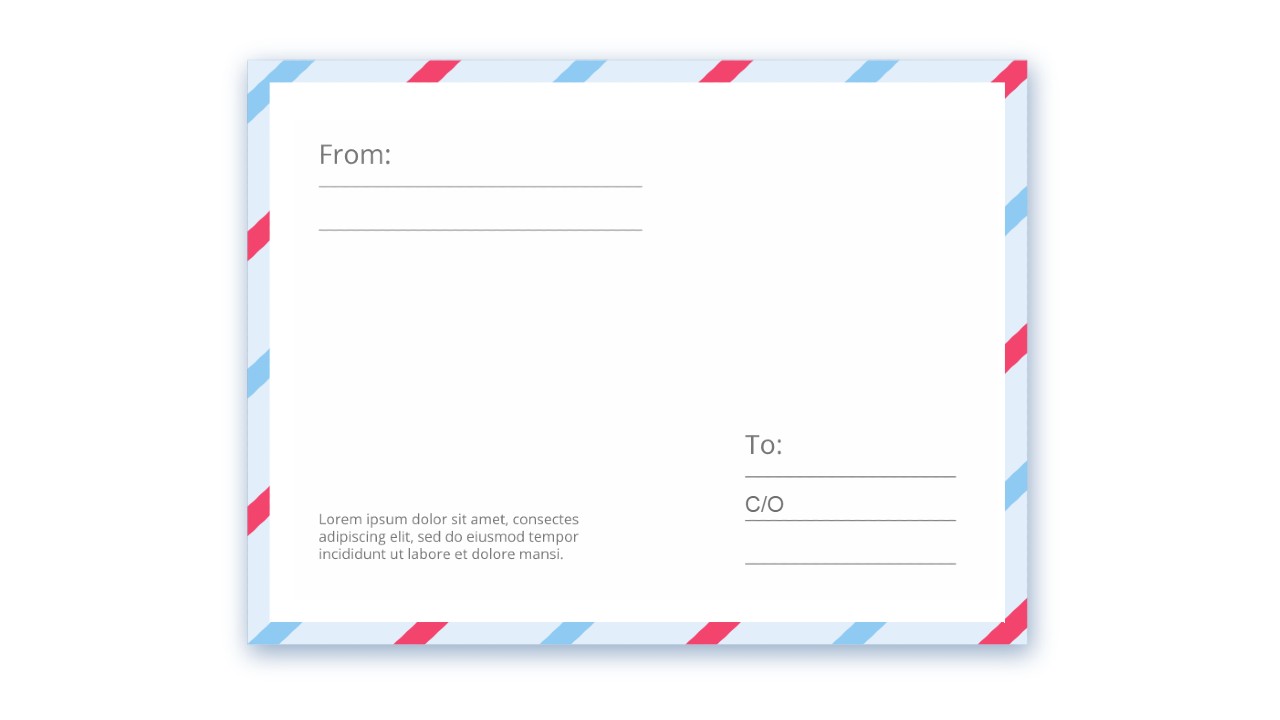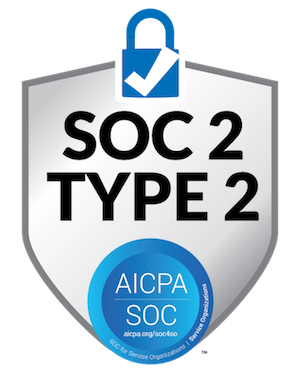
How To Use C/O In Mailing Address
℅ or “in care of” means where the intended recipient differs from the recipient who receives the mailpiece. You can use it to secure it while sending mail to a hotel, a recipient’s friend, someone’s attorney, or elsewhere. Ensure the secondary address you are mailing to is accurate while using a ℅ line. The intended recipient’s name should always appear on the first line if the address belongs to someone else.

Include the ℅ address line in the second line of your mailing address. If you are mailing to a business address, write ℅ followed by the company name. The third line should have a proper civic address with correct directionals and abbreviations. It is also essential to mention the municipality, province, territory, or postal code.
Canada Post recommends adding a return address on the upper left-hand corner of your mailpiece. You must attach the necessary number of stamps after calculating the postage. It is essential to avoid mixing up the recipient’s name and the other person’s name who will be receiving the mail. In this blog, we will talk about the c/o address’s meaning, uses, and examples. Also, we will cover how to use it while sending a mail item to someone.
Key Takeaways
- Mentioning the wrong person’s name or address can lead to failed delivery of your mailers.
- An ℅ address uses an additional line to address the person who will receive your mail.
- ℅ ensures that the mailpiece is not returned to the sender if the postal service can’t identify the recipient.
- Using this address line benefits both the sender and recipient to ensure successful delivery.
- The second line of your mailing address should consist of the ℅ address line.
- The additional line contains the name of the company, hotel, or person you are mailing.
What Does C/O Mean in An Address?
C/o stands for “in care of” and is written along with the mailing address on an item.
But, what does care of mean?
It means that a mail item is “in the care of” another person. “Care of” addresses are used in situations where the intended recipient is different from the actual recipient who collects the mailpiece.
They help ensure that the mailpiece is not returned to the sender if the postal service does not identify the recipient and refuses delivery.
Suppose you have a roommate who is home all day and usually receives the mail, and you always come home late from work. In this case, anyone mailing something to you can write your roommate’s name on the c/o address line. While writing the mailing address, your name would come on the first line followed by this line.
So, your roommate collects and signs (if required) the mail and then passes it on to you. This way, the mail reaches the right hands even though you weren’t originally able to collect the mail yourself.
Mailers can also use c/o addresses when they are unsure of the intended recipient’s home address. Thus, they add a c/o line and send mail to that person’s business address.
When Should You Use “Care of” to Address an Envelope?
Apart from the above reasons, there are several other occasions when you may use “care of mailing addresses”.
Using such addresses benefits the sender and recipient both- the senders assure that their mail does not return to them and the recipients can get their mail safely.
Plus, it prevents other issues like misplaced or stolen mail, failed deliveries, data breaches, etc.
Find below some situations where it is advisable to use a c/o line:
Sending Mail to a Hotel
If you want to mail to someone currently residing in a hotel, you should write the room number in your mailing address. But, sometimes, you may not know the room number.
In such cases, you can add a c/o line and mention the hotel name where you need to mail. When the mailpiece reaches the hotel, any staff member can collect it and drop it in the recipient’s room.

Sending Mail to the Recipient’s Friend
Suppose you don’t have the mailing address of your intended recipient but have the address of one of their friends. You may add c/o to the address and send your mailpiece to the friend instead.
The c/o line lets the person know that the mail is sent for someone else and not themselves.
Sending Mail Elsewhere to Secure It
For example, you want to mail someone living in a bad neighbourhood. It is better to send the mail someplace else with a c/o line to assure its security.
Sending Mail to Someone’s Attorney
Sometimes, some clients request to get their account statements, invoices, or cheques mailed to their attorney’s offices. Hence, you send the document to the attorney’s office using a care-of address.
You may direct the mailpiece to some other trusted place as well. Make sure to contact the recipient beforehand regarding where to send their documents. It will help both parties keep the documents safe and confidential.
Here’s a checklist regarding when to use the c/o line in a mailing address:
- You want to send mail to someone currently unavailable to receive your mailpieces.
- The intended recipient currently has no fixed mailing address and wants you to mail elsewhere.
- You repeatedly get mail returns due to an incomplete or invalid mailing address, making it difficult to reach your intended recipient.
- You are a B2B company and are unsure about whom to mail a document, invoice, or marketing mailpiece within a company.
- You want to ensure the mail reaches someone who can pass it on to someone who can respond to your message.
 Also Read: Best Address Verification Software
Also Read: Best Address Verification SoftwareHow Senders Should Address a Letter In Care of?
Now that you know the benefits of using a c/o line, let us see how to use c/o in mailing addresses.
Collect the Correct Details
If you use a c/o line, there are chances that you are mailing to a secondary address (different from the recipient’s home address). It depends on the situation under which you are using a c/o address.
The point is that you should make sure the secondary address you are mailing to is correct.
You may call or email the recipients to confirm their secondary addresses or use PostGrid’s address verification API to speed up the process.
Add the Recipient’s Name
Your intended recipient’s name should always appear on the first line. It doesn’t matter if the address below belongs to someone else.
Include the C/O Line
The second line of your mailing address should be the c/o address line.
If you are mailing something to a business address, write “c/o” followed by the company’s name—for example, c/o Tatia Apparels.
Similarly, you can add the hotel’s name if you need to mail a hotel. In the case where you are mailing a person, write “c/o XYZ.”
Write the Civic Address
The third line should consist of the civic address—for example, 1248 George ST. Take care to include correct directionals and abbreviations to avoid any misinterpretations by the postal workers.
Mention the Municipality, Province, and Postal Code
As per the Canada Post guidelines, all mailing addresses should have the municipality, province or territory, and postal code on the last line.
Write the city name followed by the 2-digit province abbreviation and 6-character postal code.
The last line of your care of mailing address should look like this:
Victoria BC V8P 5H5
Add Your Return Address
Write your return address on the upper left-hand corner of your mailpiece. You may also mention it on the back of your envelope on the opening flap.
In the case of non-delivery, Canada Post is able to return your mail back only if you add a return address.
Attach Proper Postage and Send
Calculate your postal charges and affix the correct number of stamps. If you are having any difficulty knowing your postage, you can take your item to the Post Office.
 Also Read: Bulk Batch Address Verification Services
Also Read: Bulk Batch Address Verification ServicesCare of Mailing Address Examples
Let us see some examples of care of letter examples to help you understand the concept better:
Example 1: Here’s how you use “care of” to send mail to a friend, relative, family member, or neighbour
Rebecca Gillies
c/o Matt Jeffries
123 Greene AVE
Montreal QC H4C 2J8
Example 2: Here’s how you can mail to your recipient’s company address
Kol Tremblay
c/o Starfleet Inc
45 Connors Rd NW
Edmonton AB T6C 4N7
Example 3: Here’s how you should write a c/o address to mail to a hotel, hostel, university, etc.
Kaley Anderson
c/o The Myriad Hotel
8 Brunswick ST
Chester NS B0J 0A9
- Mention the delivery address in uppercase letters for better interpretation.
- Always print postal codes in uppercase without adding hyphens. You must separate the first and last three letters using a space.
- Add the municipality name, province or territory abbreviation, and postal code on the same and last line. There is no need to mention “Canada” for domestic mailings. Use one space between the municipality name and the province/territory abbreviation.
- However, you must add two spaces between this abbreviation and the postal code. You can add the postal code on the following line in some cases where the other two elements cause the line to become too lengthy.
- Avoid using punctuation unless it is a part of a street or city name, like ST. JOHN’S.
- Align all addresses to the left. All lines should have fewer than 40 characters, excluding spaces.
- The gap between the two address lines should be at least 0.5 mm, but never exceed one blank line.
- All characters in the address block should be printed using the same font. They should be a minimum of 2 mm in height but not cross 5 mm.
- Clearly separate the return address from the delivery address. Use the same font and size. You can add it to the top-left corner of your address label or envelope. Or mention it on the back of the top, like the envelope’s opening flap.
 Also Read: Address Verification Services
Also Read: Address Verification ServicesOver to You
It is not hard to use c/o in a mailing address before sending an item to someone. But, remember to avoid mixing up the recipient’s name and the other person’s name who will be receiving the mail.
A care-of address consists of an additional line to write the name of the company, hotel, or person you are mailing. This line starts with “c/o” to make it clear that the mailpiece is not meant for this party. Instead, they are responsible for passing on the item to the recipient.
PostGrid’s direct mail API can help create, print, and mail your items in an automated way. It can also help you cross-verify your recipient’s primary and secondary addresses to ensure that you send mail to the correct addresses.
This way, you can mail effortlessly and at lower costs. Plus, you can track your items in real-time to check if they reach the correct location.
Sign up to know more about how we can assist you in conducting your mailing campaigns and verifying your c/o addresses.
 Also Read: Transit Number Vs Branch Number
Also Read: Transit Number Vs Branch NumberFAQs
Is it Necessary to Add the C/O Line to all Delivery Addresses?
No, you must only add this line when addressing the mailpiece to someone different from the intended recipient. They could be an authorized person who can collect mail on the recipient’s behalf and pass it on to them later.
Can I Mention C/O in a Separate Place Than the Mailing Address?
No, it is advisable to mention the c/o line within the delivery address to get adequate attention. You can follow the proper address format to ensure the mail is delivered to the correct person only.
What Should I Do to Send My C/O Mailpieces Online?
You can use PostGrid’s Direct Mail solution to conduct your mailings online in an automated manner. It allows you to design, print, and ship the mailpieces in one place, reducing costs, time, and manual effort.










